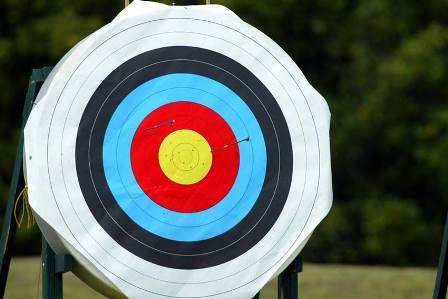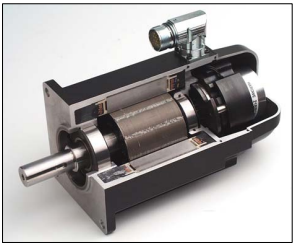This is the first post in our series on Feedback. For today's post -let's talk feedback. Not that annoying noise you hear when a singer's microphone gets too close to a speaker at a concert, but servo feedback.
 A critical element of any servo system is the feedback device - after all, that's what makes it a servo to begin with! How about a very simple example to start off with: I have a bow and arrow, a target 30 feet away, and I left my glasses at home. So while I do see a large round "thing" in the distance, I have trouble making out the edges of the rings on the target. My feedback is not very accurate at the moment - so I'm likely not going to hit the bull's-eye. I discover my glasses in my pocket, slip them on - and now I can see the target much better, and I at least have a better chance now of hitting the target. Yes, there are other factors, environmental, arrow construction, etc., but you get the point (pun intended)!
A critical element of any servo system is the feedback device - after all, that's what makes it a servo to begin with! How about a very simple example to start off with: I have a bow and arrow, a target 30 feet away, and I left my glasses at home. So while I do see a large round "thing" in the distance, I have trouble making out the edges of the rings on the target. My feedback is not very accurate at the moment - so I'm likely not going to hit the bull's-eye. I discover my glasses in my pocket, slip them on - and now I can see the target much better, and I at least have a better chance now of hitting the target. Yes, there are other factors, environmental, arrow construction, etc., but you get the point (pun intended)!
Fundamentally, a servo system can perform no more accurately than the accuracy of the feedback device controlling it. In addition, errors in speed or position can be introduced into the system by the less than perfect mechanisms that transfer the motor power to the load. Environmental factors like electrical noise or temperature may also introduce positioning errors. Sometimes the errors are acceptable. More frequently, however, they are not. After all, servo motors are typically an important investment for a precision machine and are expected to be the most reliable and accurate of all positioning systems.
The best place to locate the feedback device is at the load, where the controlled motion is required. This way, you can eliminate errors introduced by less than perfect transmissions. Remember, a brushless motor requires position feedback for commutation - and it's critical to be located on the same shaft as the rotating member for best performance (see picture).
When using a motor mounted feedback as your only source, it is important to consider the cyclical and cumulative errors associated with the transmission and feedback to determine if that error is acceptable. If those errors are not within acceptable limits, you just may need to add another feedback device at the load. Direct drive servo motors have a nice advantage in this department - they are directly coupled to the load thereby eliminated compliance and backlash. Direct drive solutions are an especially excellent choice for applications looking for precise motion and high bandwidth, just for this reason.

Most servo motor manufacturers integrate the
feedback element directly into the motor housing
So - we have established that feedback is important, the location plays a role as well - so now what? In our next post, we'll begin a dive into feedback types, including both absolute and incremental. We'll review hall-effect devices, resolvers, encoders, sine encoders, linear encoders, and other feedback devices that are typically used for precision motion control. Sign up to follow us as we journey down the path of feedback devices.






